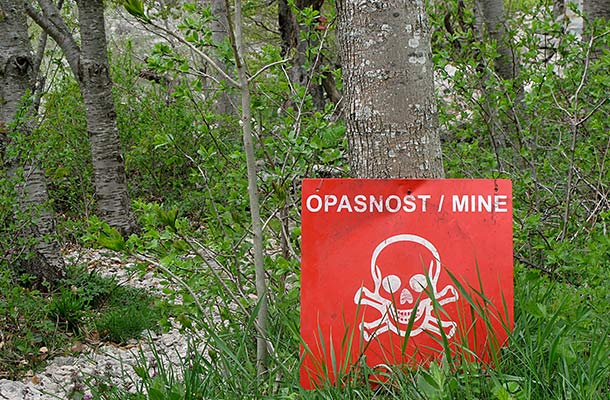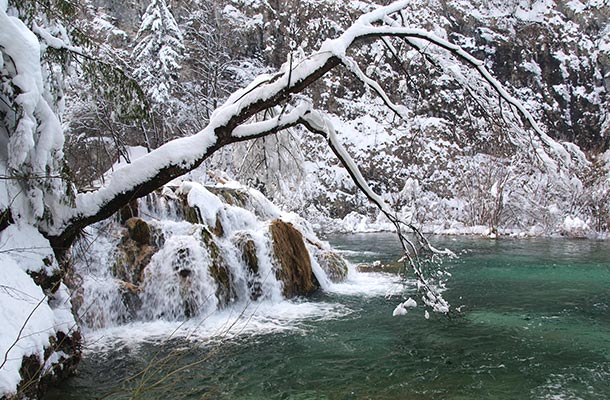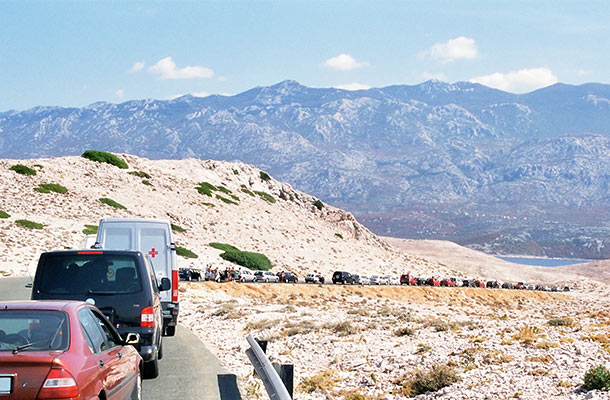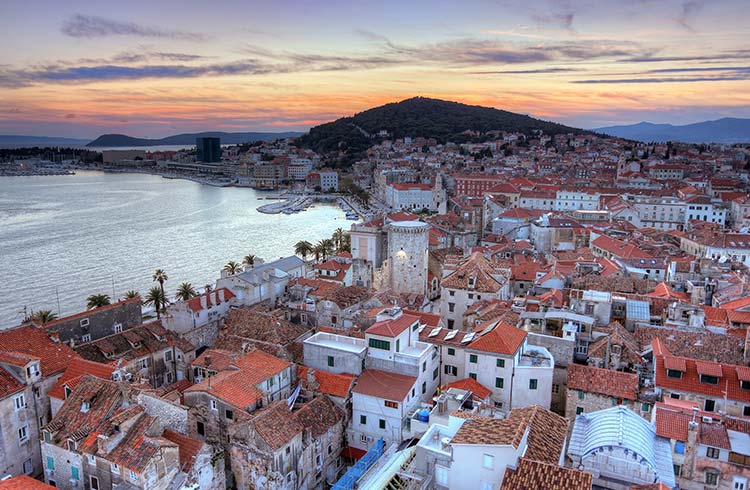Landmine Danger in Croatia: Essential Tips for How to Stay Safe
Since 1995, when the Croatian War of Independence ended, there are still undetonated landmines lying around Croatia's countryside. Here's what you need to know and how to stay safe.
 Photo © iStock/ursusarctos
Photo © iStock/ursusarctos
Croatia has a few battle scars from previous conflicts, whether that's bullet holes in city buildings or unexploded landmines that still dot Croatia's countryside.
Up to two million mines were laid by both the Croatians and Serbians during the Croatian War of Independence (1991-1995), leaving the country with one of the worst land mine problems in Europe.
- Landmine areas in croatia
- Reducing landmine deaths
- Stay safe by sticking to marked paths
- Landmine Warning signs
Landmine areas in Croatia
As of late 2023, there were 4 counties and 21 municipalities still contaminated with approximately 10,000 unexploded mines. Landmine-clearing efforts have been ongoing since the war, with a national goal of having all mines cleared by March 2026.
Mines were mostly laid in inland rural areas along the front lines. Suspected minefields are typically found in woodlands, forests, agricultural land, meadows, and pastures. As a result of this still-present danger in Croatia, there are more than 4,000 warning signs across the country.
Reducing landmine deaths
Hundreds of people were killed by land mines during and immediately after the war, but this number is decreasing.
There is some debate about the number of casualties among tourists, but there's no doubt the number is very small.
A Dutch tourist lost a leg in 2003 after stepping on a mine on the island of Vis, but it's believed he had crossed a warning sign on an old army base.
For most travelers, the risk presented by land mines is minimal.
If you stick to the main towns and cities along the coast you're no more likely to encounter a land mine than you are walking down the main street of your hometown.
According to the Croatian Mine Action Centre (CROMAC), the road network, tourist destinations, public facilities and other commonly used areas have all been declared secure.
Stay safe by sticking to marked paths
However, adventure tourism is becoming more and more popular in Croatia, and many of these activities take place away from the main tourist centers.
If you plan to get off the beaten track, do your research beforehand.
Before you head off to master the rapids or tear up the countryside on your mountain bike, check online for updated maps of known and suspected mine areas. Also look for lists all of regional offices which can provide more specific information on the landmine affected areas.
Once you get to Croatia, it may be tempting to get in touch with your wild side, but you should stick to known safe roads when driving and marked paths when hiking or mountain biking.
The decreased casualty rate from land mines in Croatia is partly thanks to an ongoing campaign to map out and signpost minefields.
But tourism is still a growing industry in some parts of Croatia, so unlike other European countries where English is an unofficial second language, not every sign or warning is translated.
Planning a trip to Croatia? Find out how travel insurance can cover adventure activities, lost or stolen baggage, sudden illness and more.
Landmine Warning Signs
Most minefields are marked with rectangular white signs reading:
“Mine! NE PRILAZITE – na ovom području je velika opasnost od mina.” This roughly translates to “Mines! DO NOT APPROACH – there are landmines in the area.”
Or:
“Mine! Opasnost! Dalje se krećete na vlastitu odgovornost.” (Roughly translated: “Mines! Danger! Beyond this point you go at your own risk.”)
Don't worry if you haven't brushed up on your Croatian or have left your phrasebook at the hostel – these signs also feature the international symbol for land mines, a red triangle featuring a skull and crossbones.
Even though you might fancy yourself the next Indiana Jones, stay away from abandoned houses and neglected bridges and roadways, especially those that look like shells have hit them, as there may be more unexploded mines nearby.
Whitewater warriors should also watch where they strap on their life jackets.
The Mreznica River in Karlovac County is a popular spot for canoeing and raft trips, but the banks and surrounding land can present mine risks.
It's best to join an organized tour with a local guide who knows where – and where not – to go.
Related articles
Simple and flexible travel insurance
You can buy at home or while traveling, and claim online from anywhere in the world. With 150+ adventure activities covered and 24/7 emergency assistance.
Get a quote


No Comments